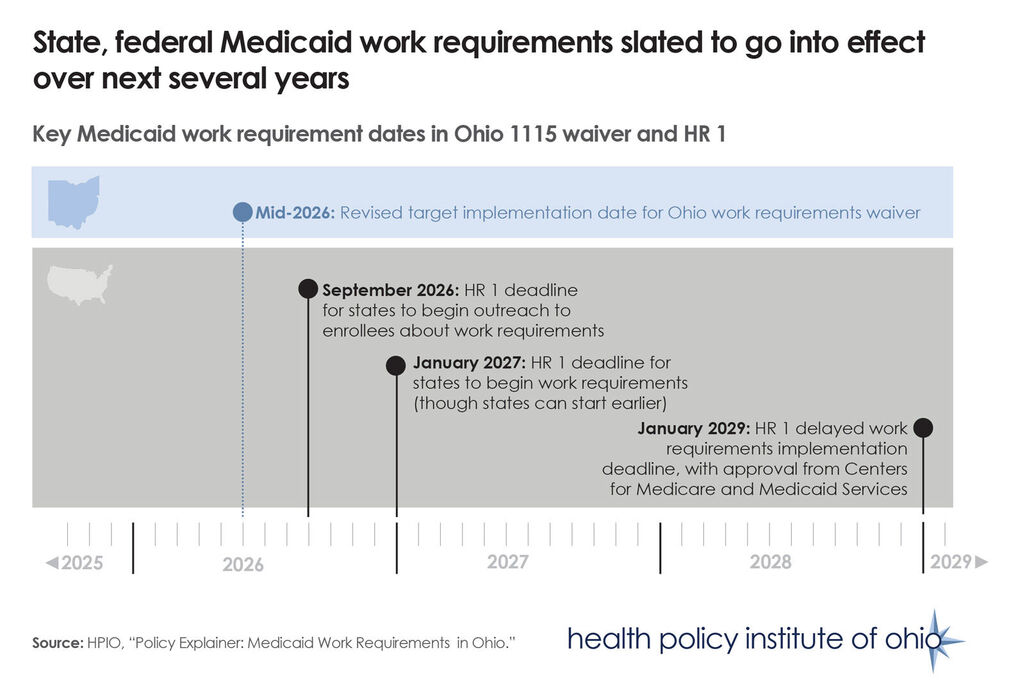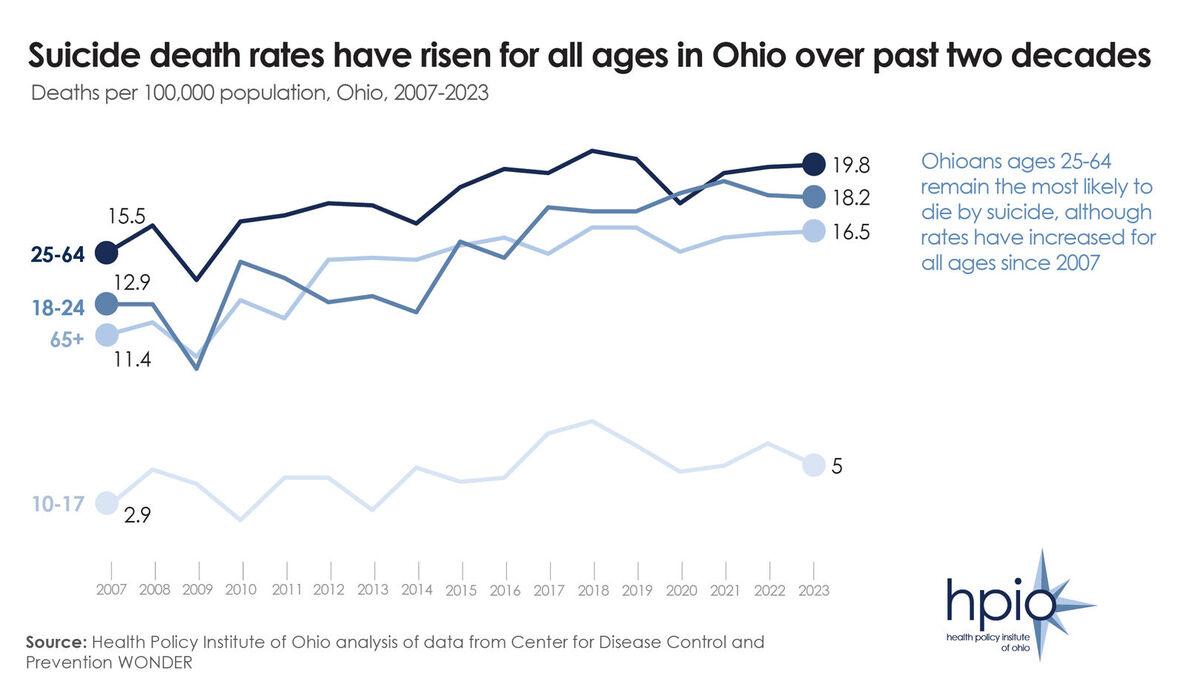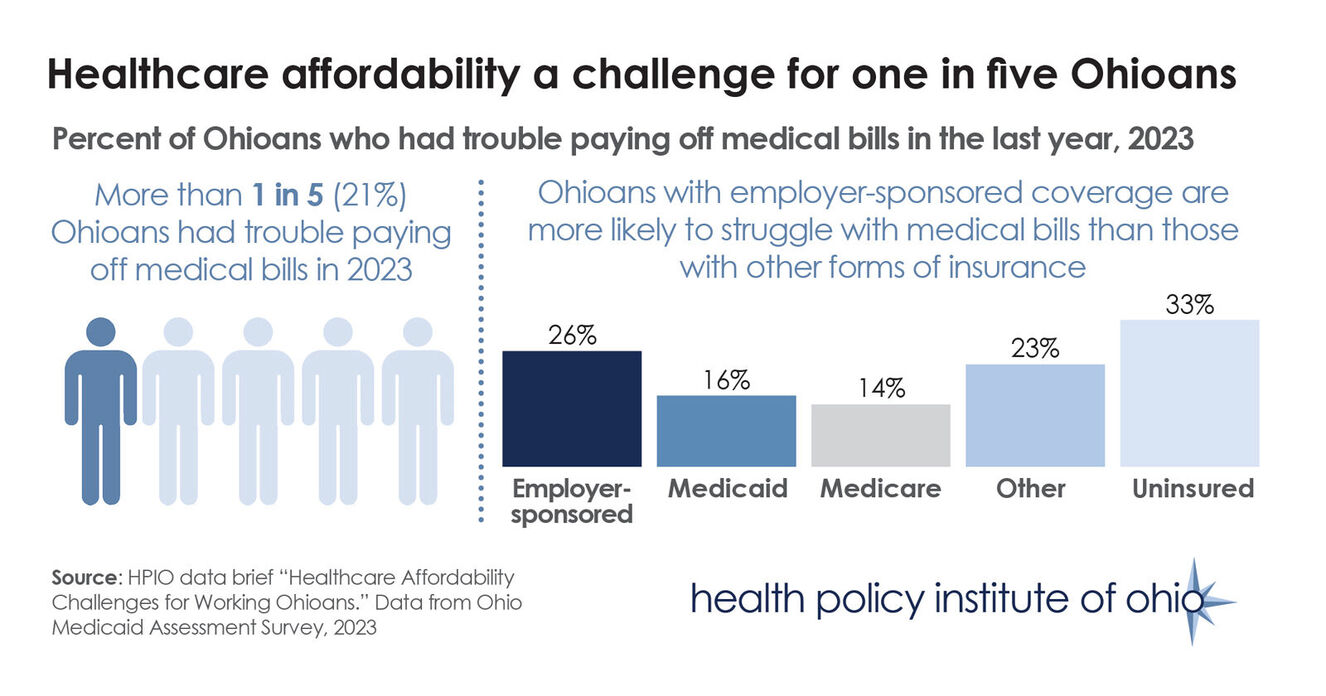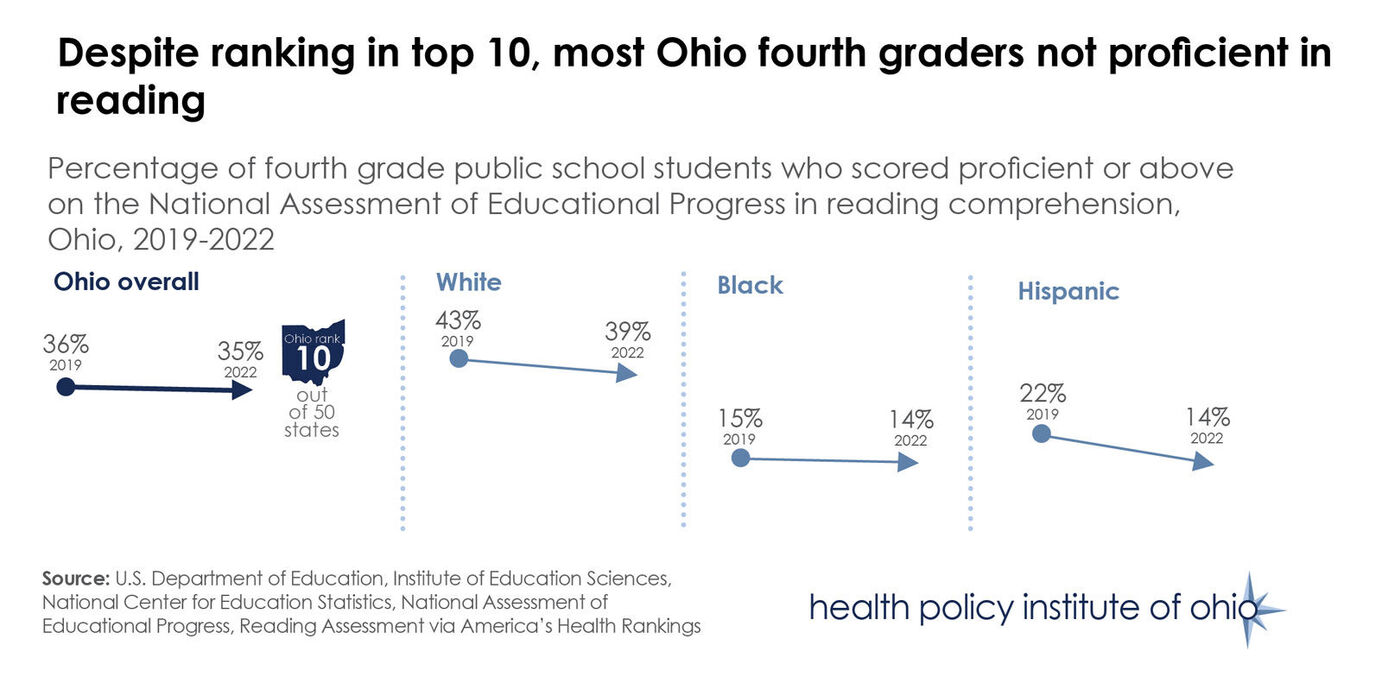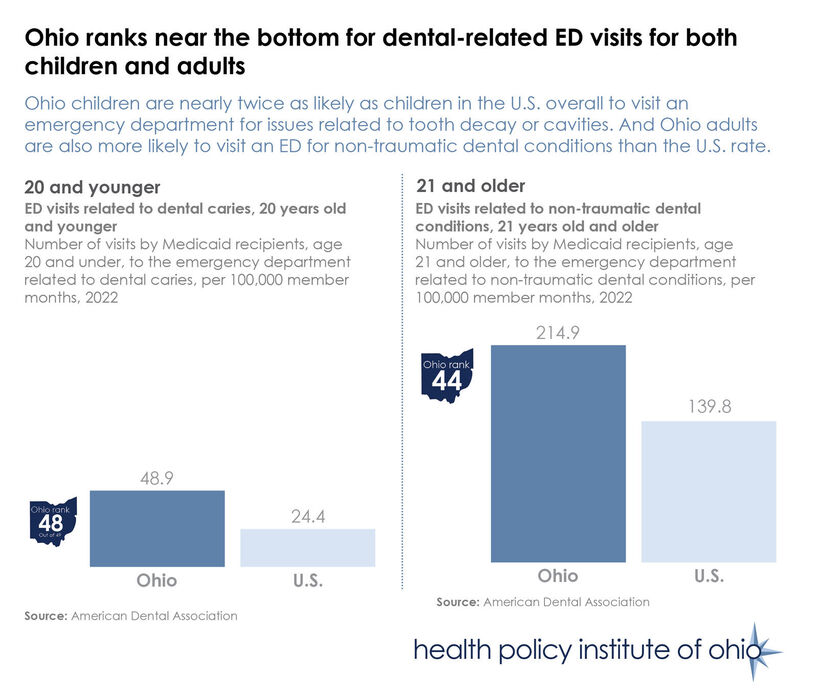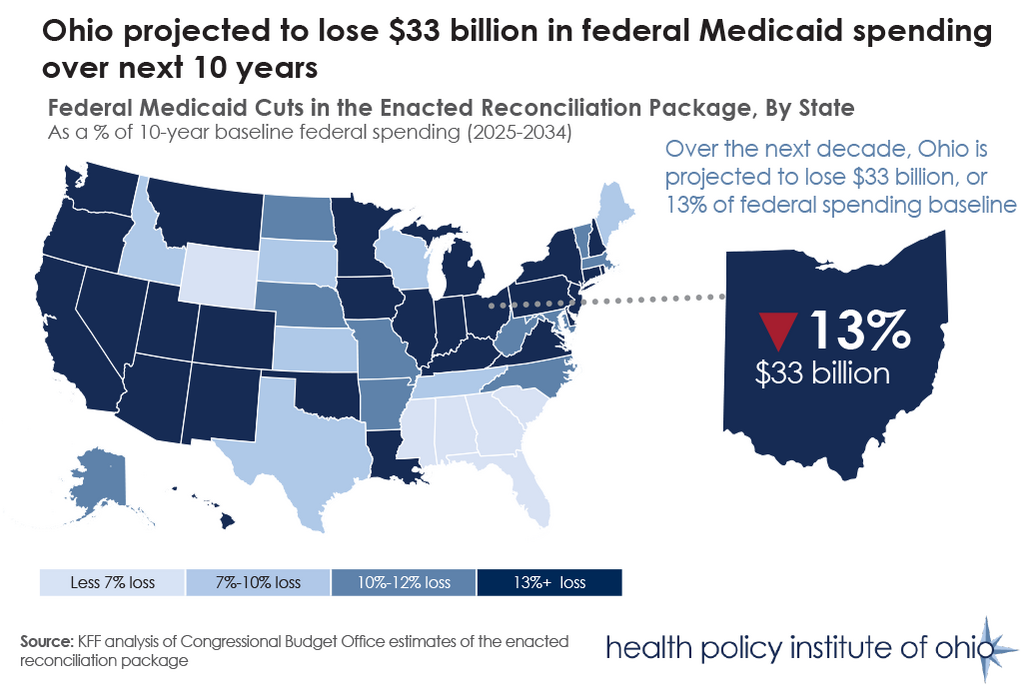Released September 26, 2025
The Health Policy Institute of Ohio has released a new quick, high-level policy explainer of potential Medicaid work requirements in Ohio.
The publication details Medicaid work requirements recently established by federal law through HR 1, the federal reconciliation bill that is sometimes referred to as the “One Big Beautiful Bill Act,” and the work requirements proposed by Ohio policymakers through an 1115 waiver proposal submitted in February 2025.
The publication describes the potential impacts of Medicaid work requirements, key points in the implementation timeline and upcoming decisions for state policymakers.
The implementation of work requirements will occur over the next few years, as illustrated above, and will be impacted by upcoming regulatory decisions from the federal Centers for Medicare and Medicaid Services. Additionally, Ohio policymakers will need to make important decisions related to work requirements in the state, including potentially reconciling the submitted 1115 waiver with the requirements in HR 1. [BO1] [NW2]
The data brief is the latest in a series of HPIO publications that includes data and analysis about the current challenges facing working Ohioans and examines how recent federal and state policy changes will impact access to care and affordability in Ohio.
HPIO’s 2025 Health Policy Summit, which will take place on Thursday, Oct. 9, will feature a plenary session focused on the health policy impacts of HR1. The session will feature:
- Jennifer Tolbert, MPH, MSW, Director of State Health Policy and Data and Deputy Director Program on Medicaid & Uninsured, KFF
- Adam Searing, JD, MPH, Associate Professor, Georgetown University McCourt School of Public Policy, Center for Children and Families
Click here for more information about the Summit and to register (the deadline for registering is Thursday, Oct. 3).


